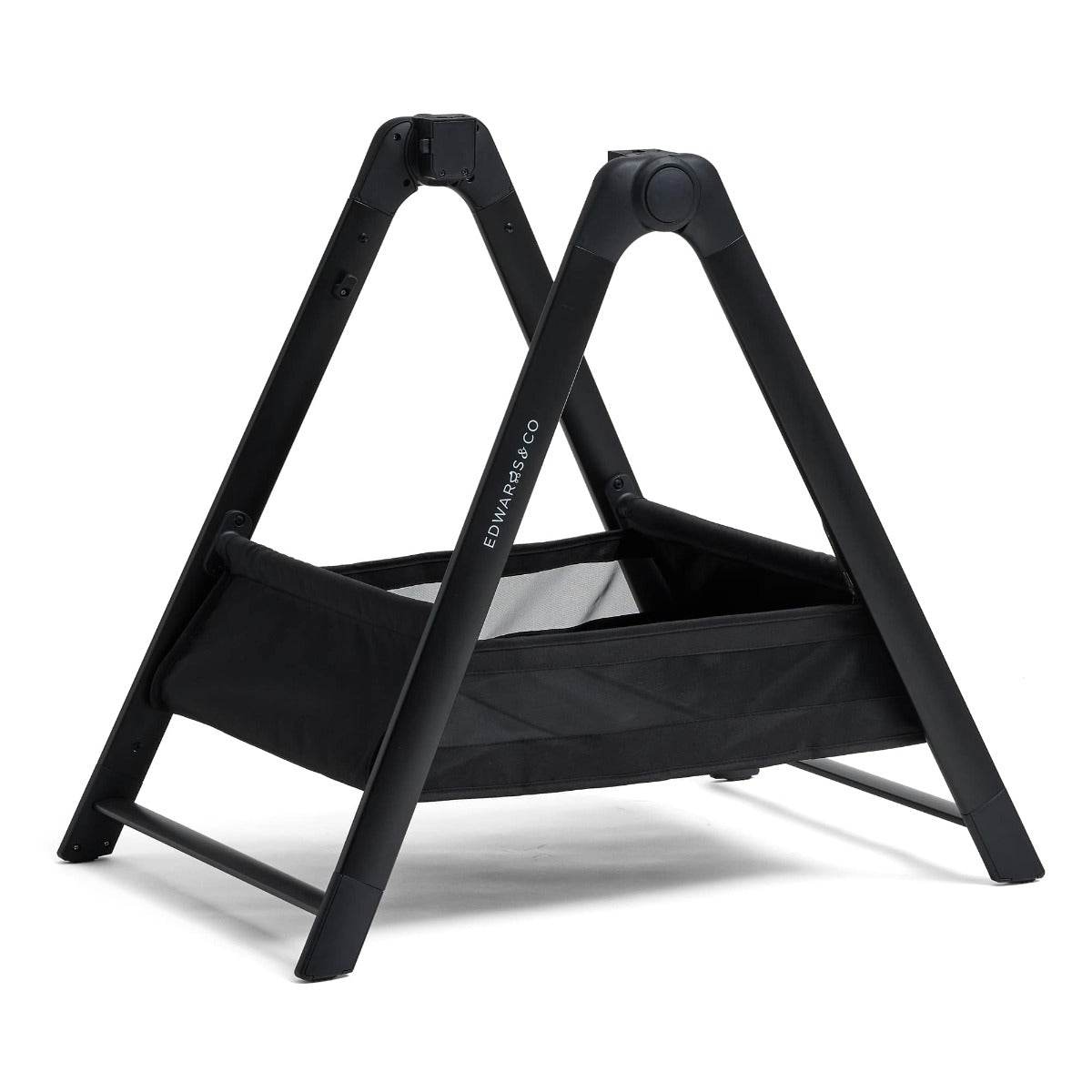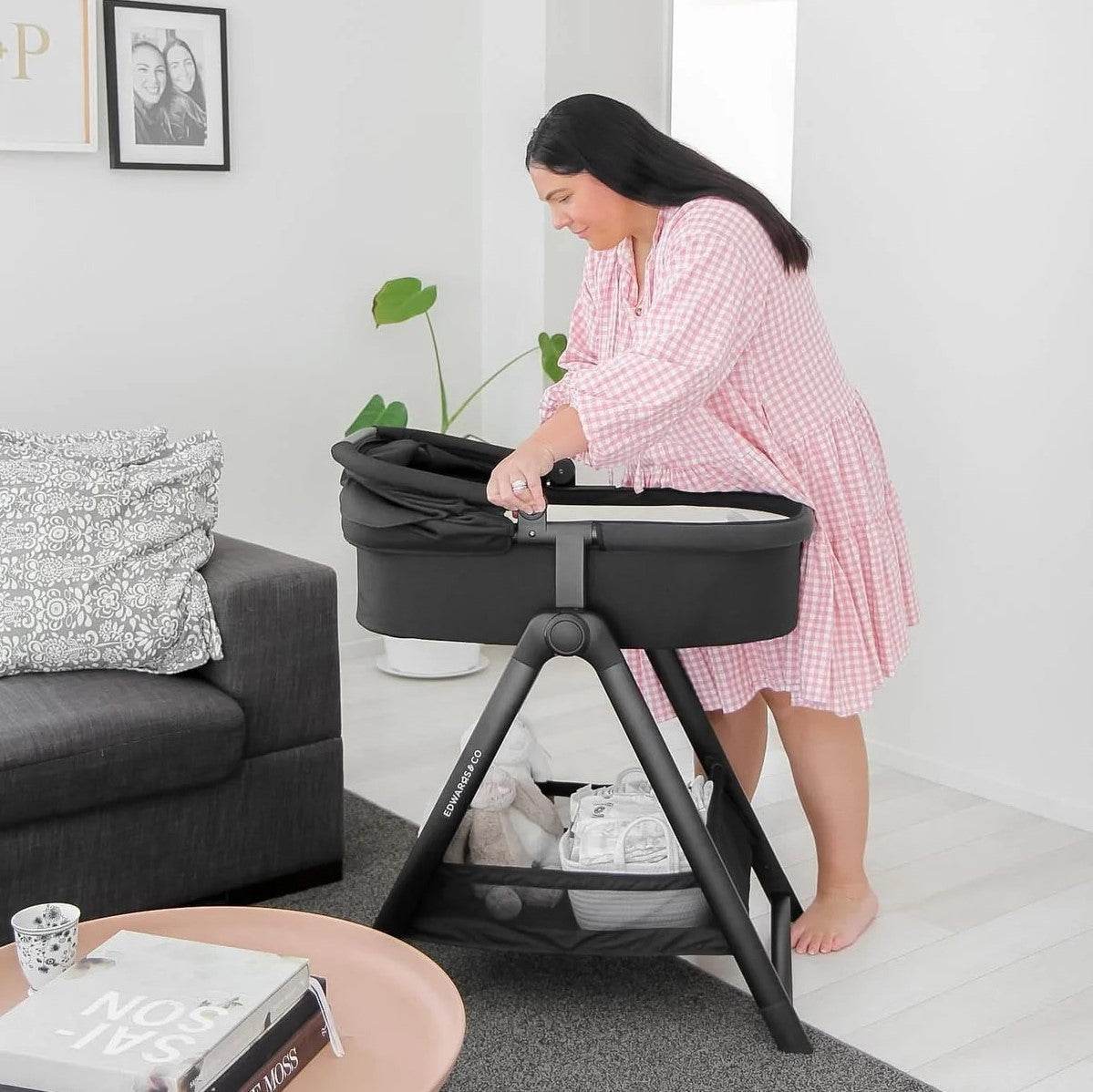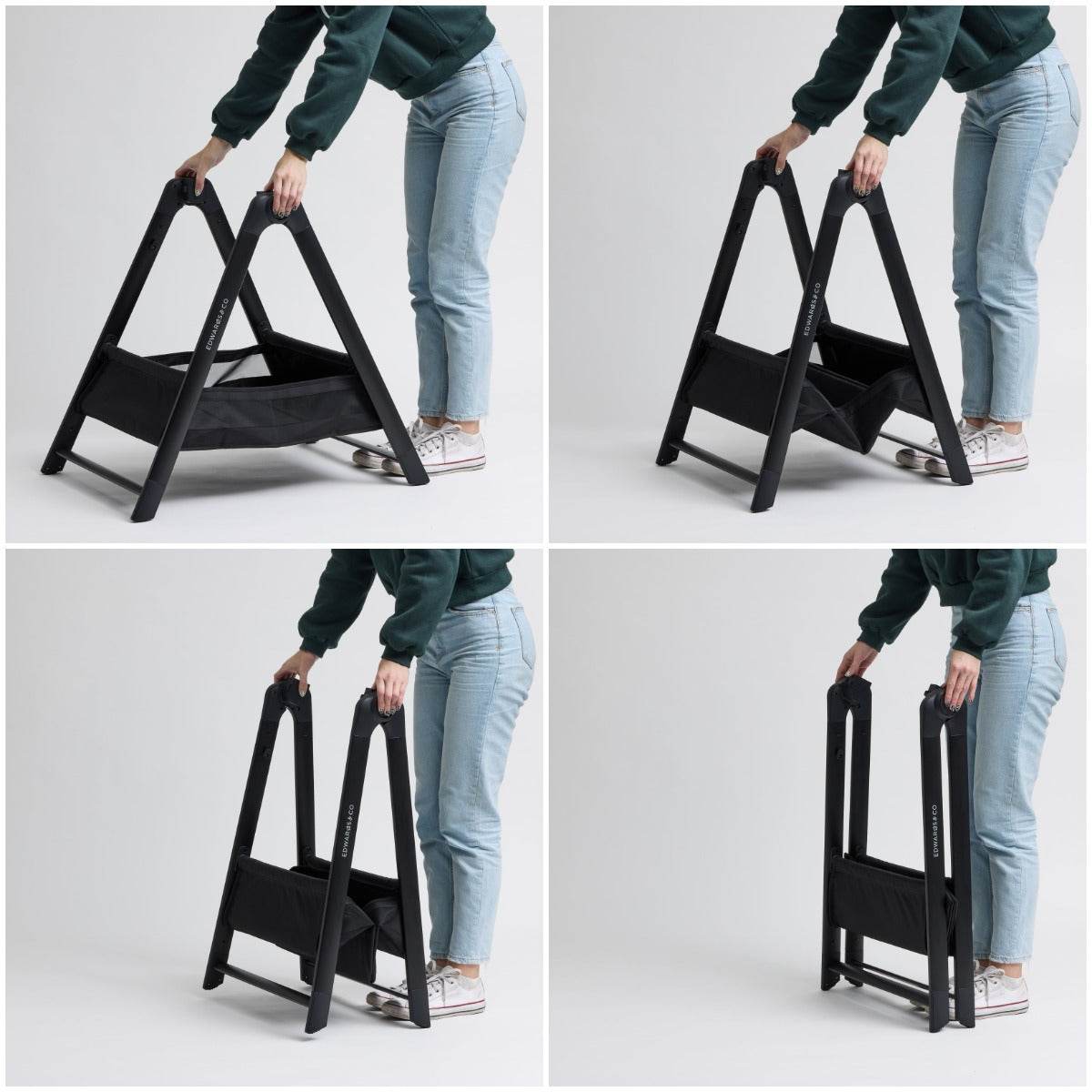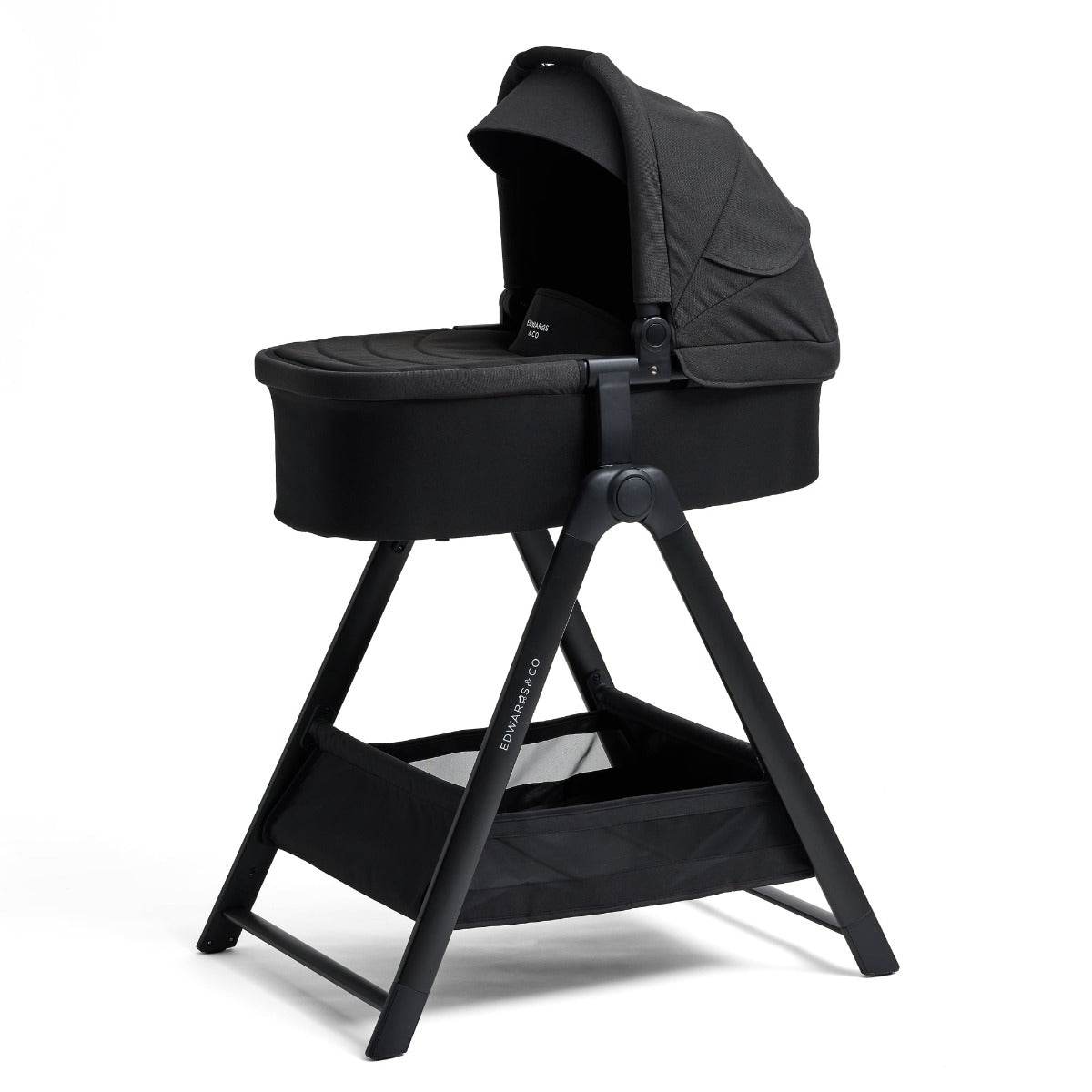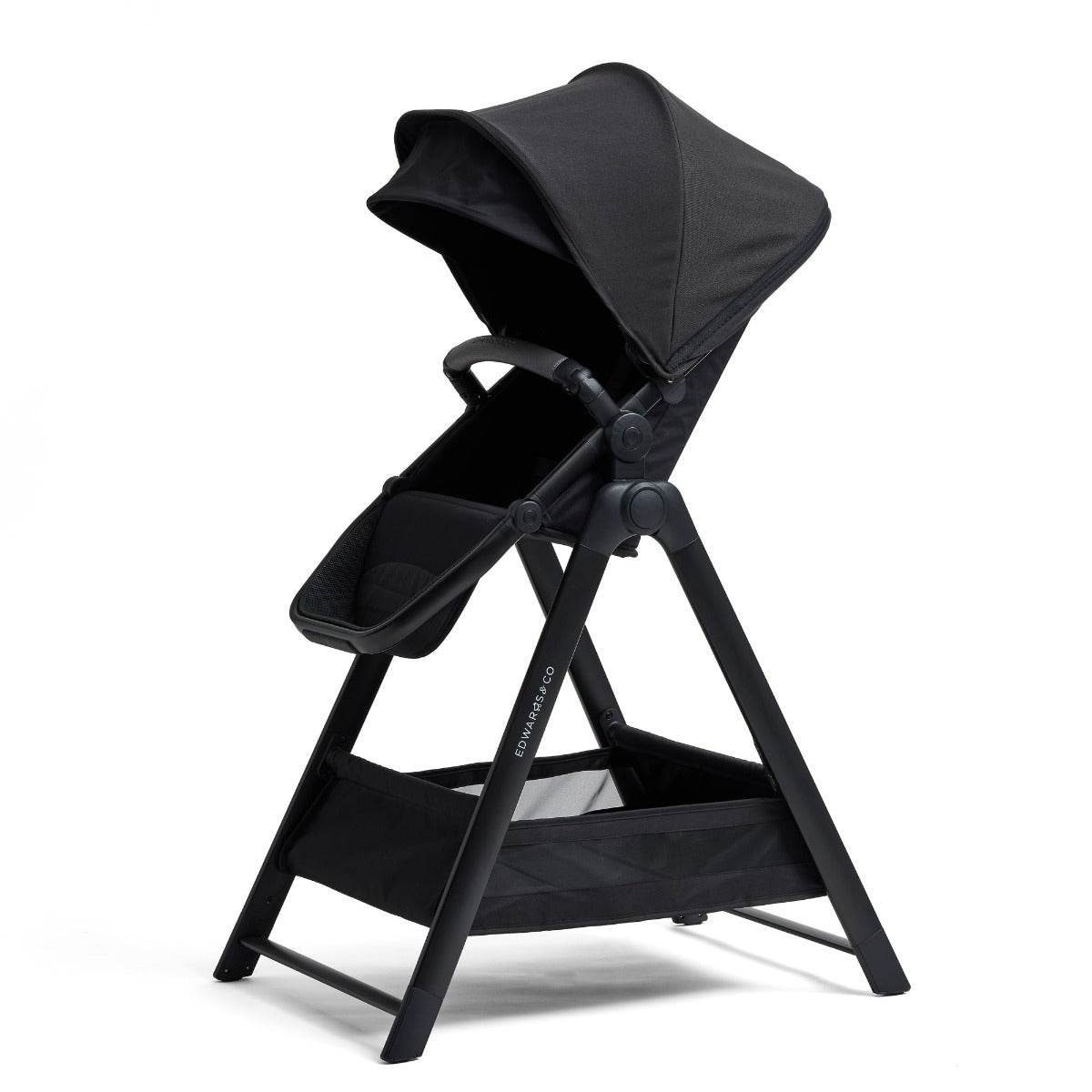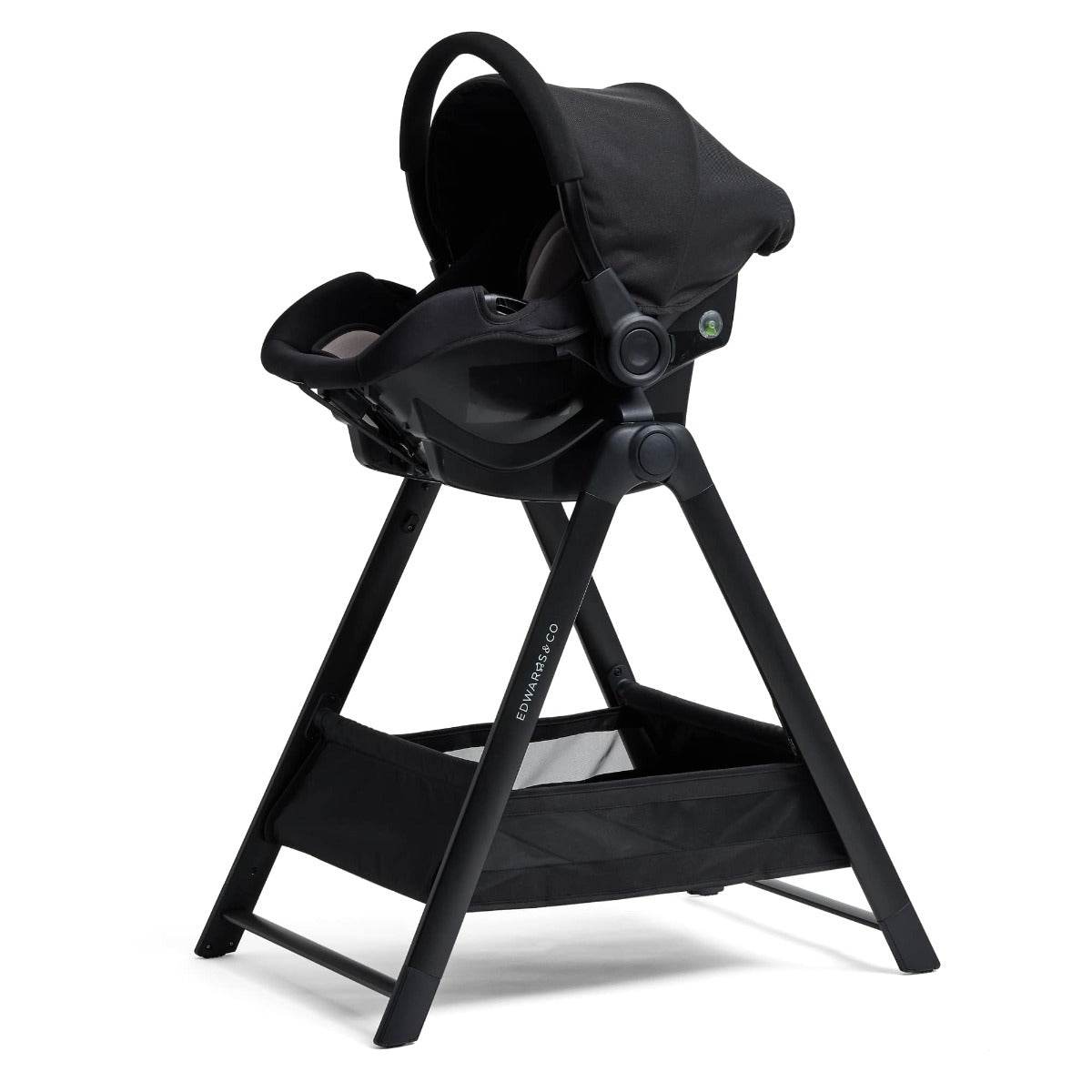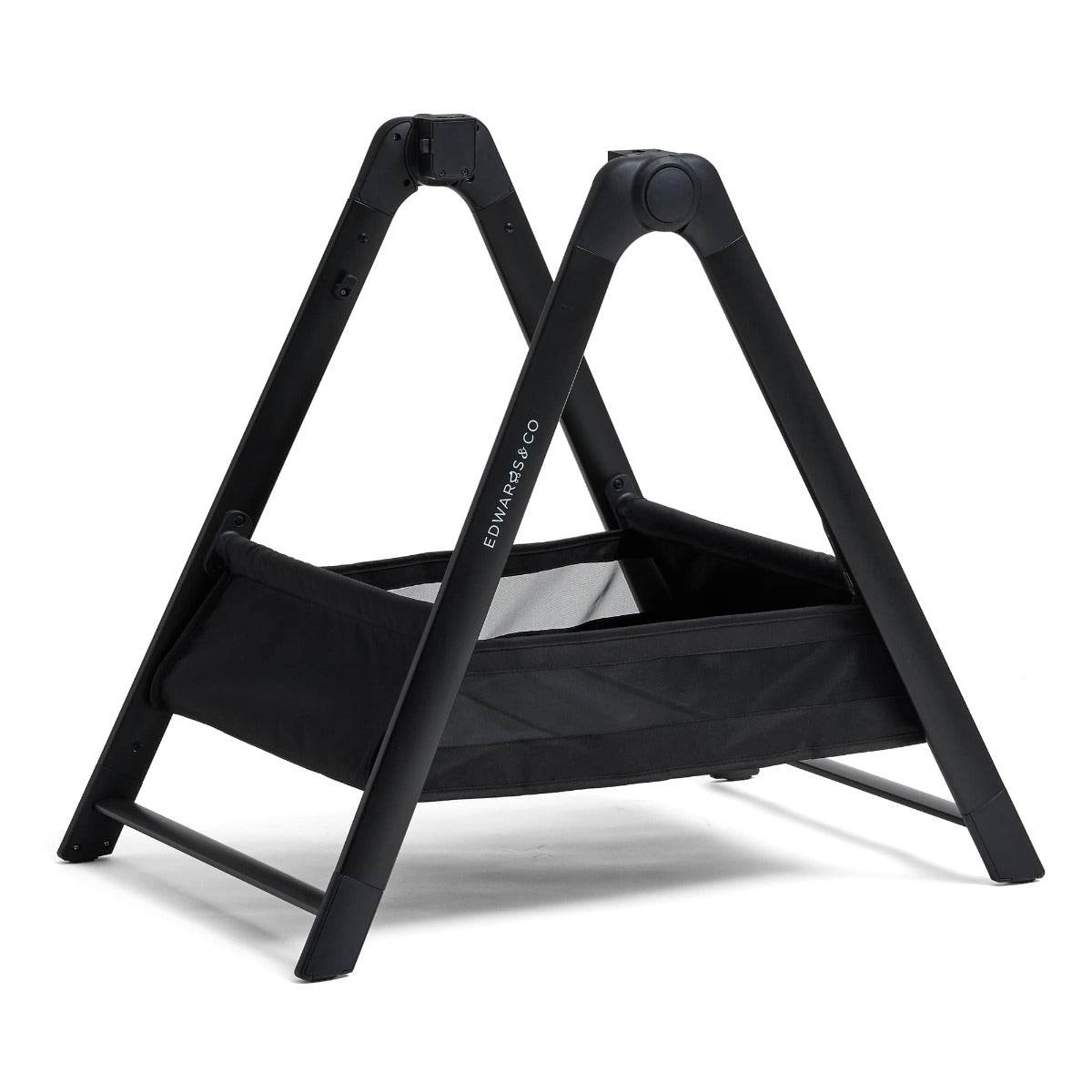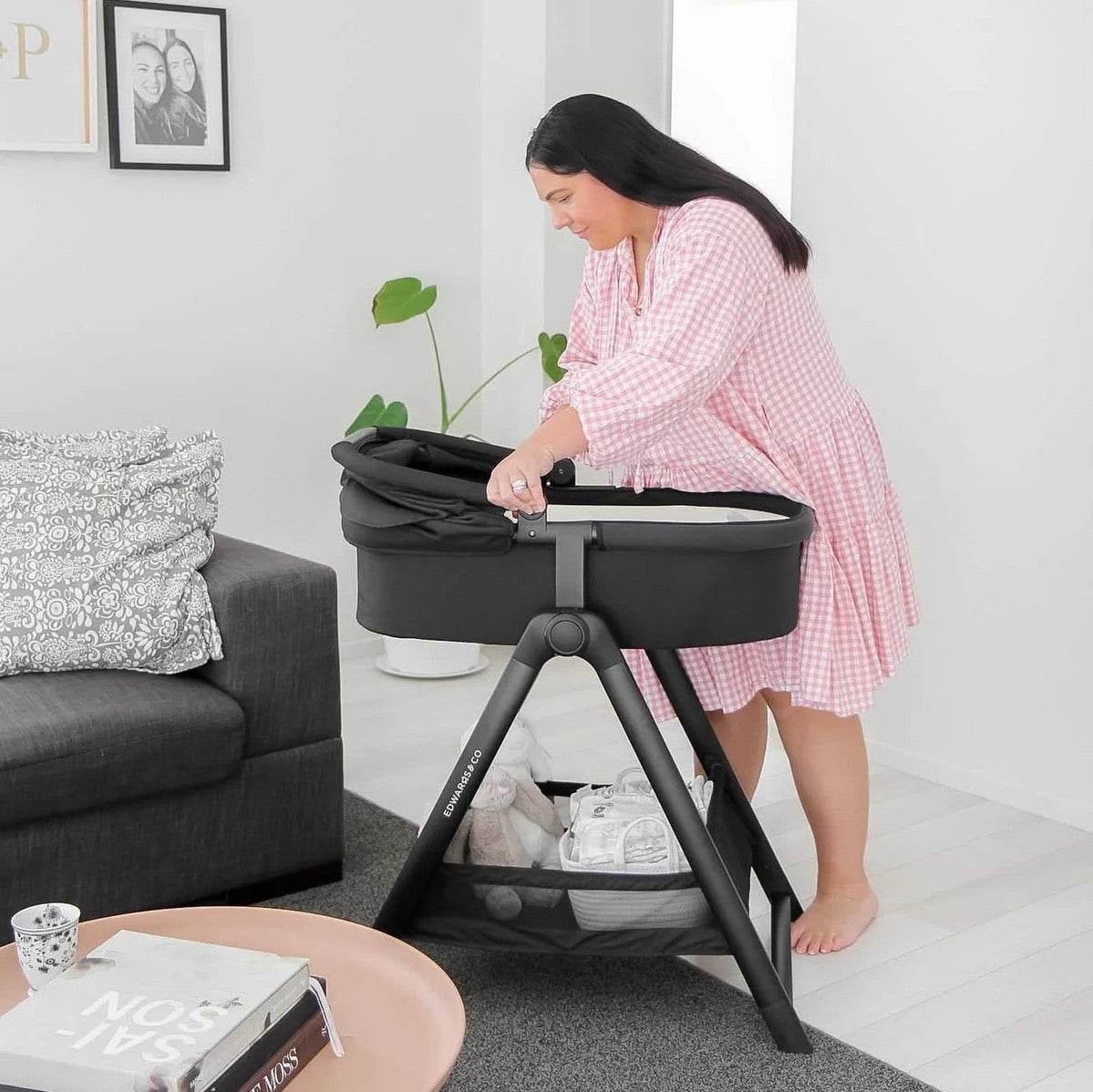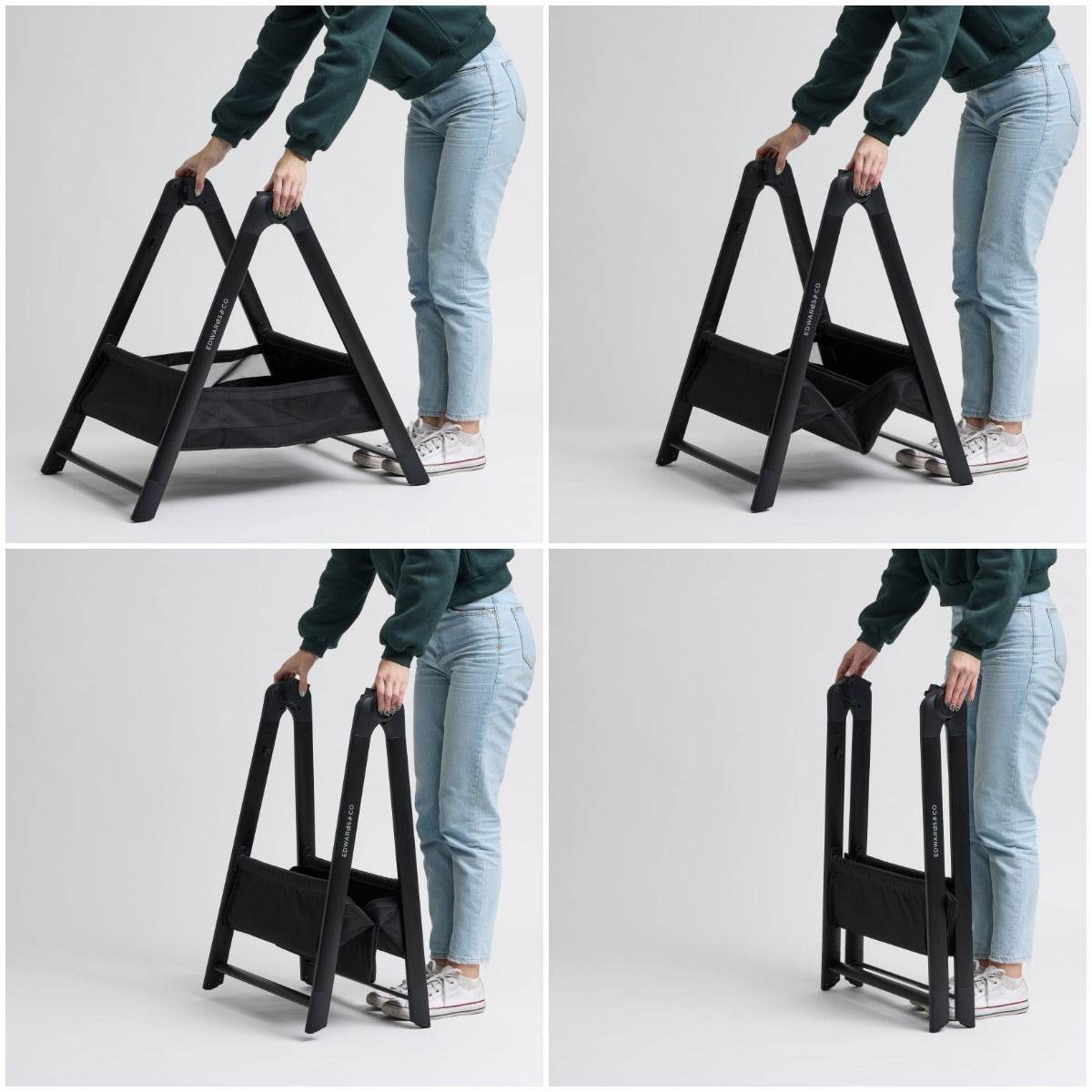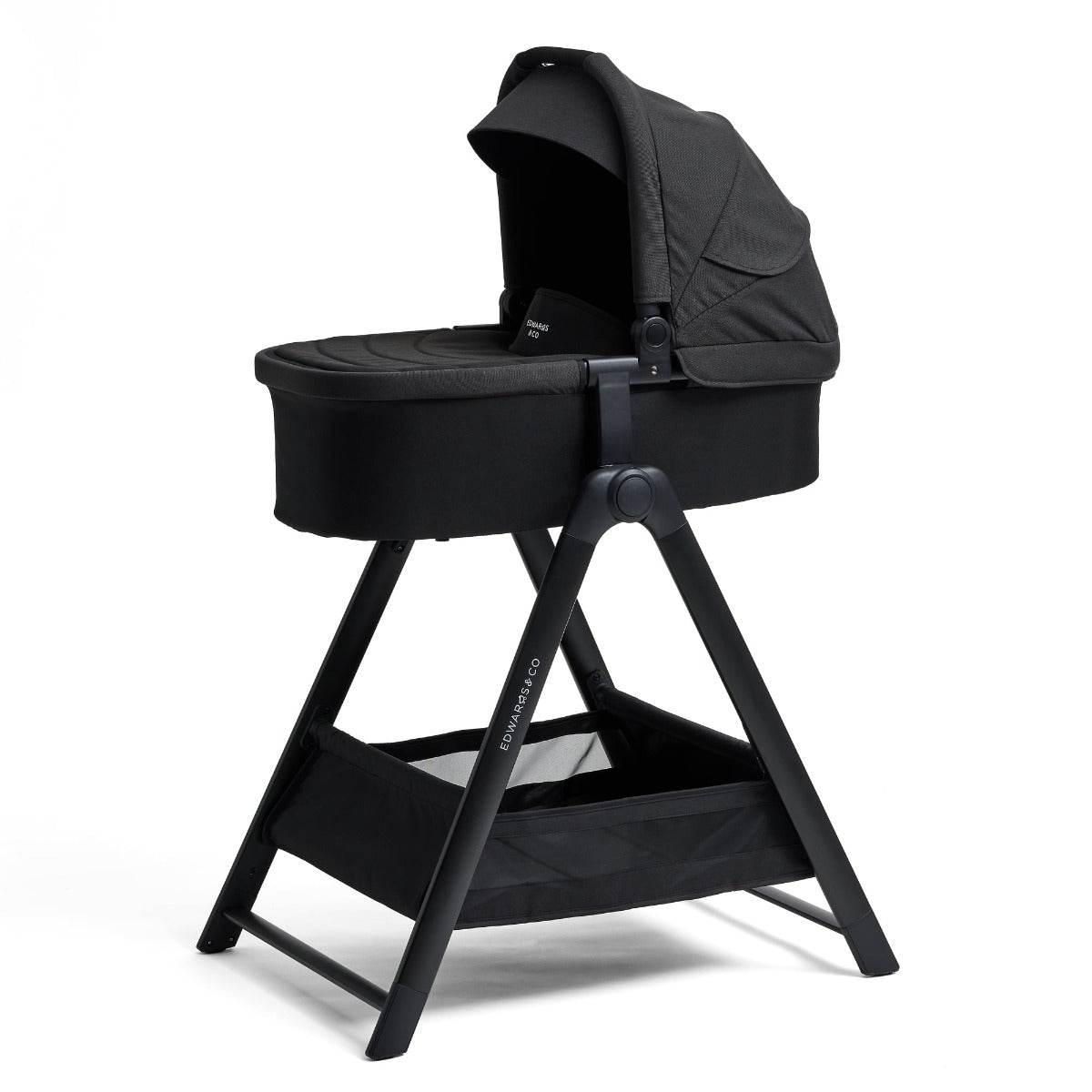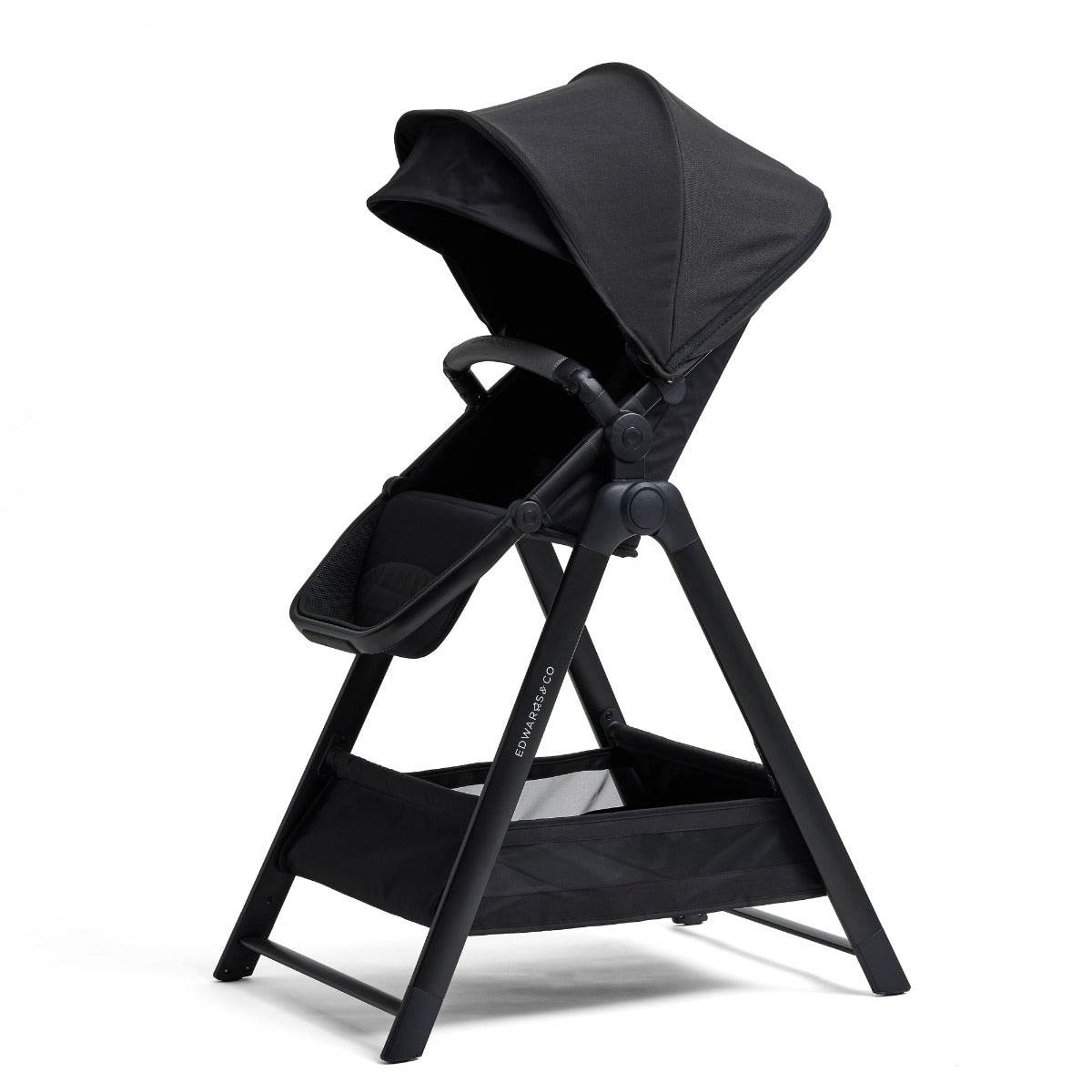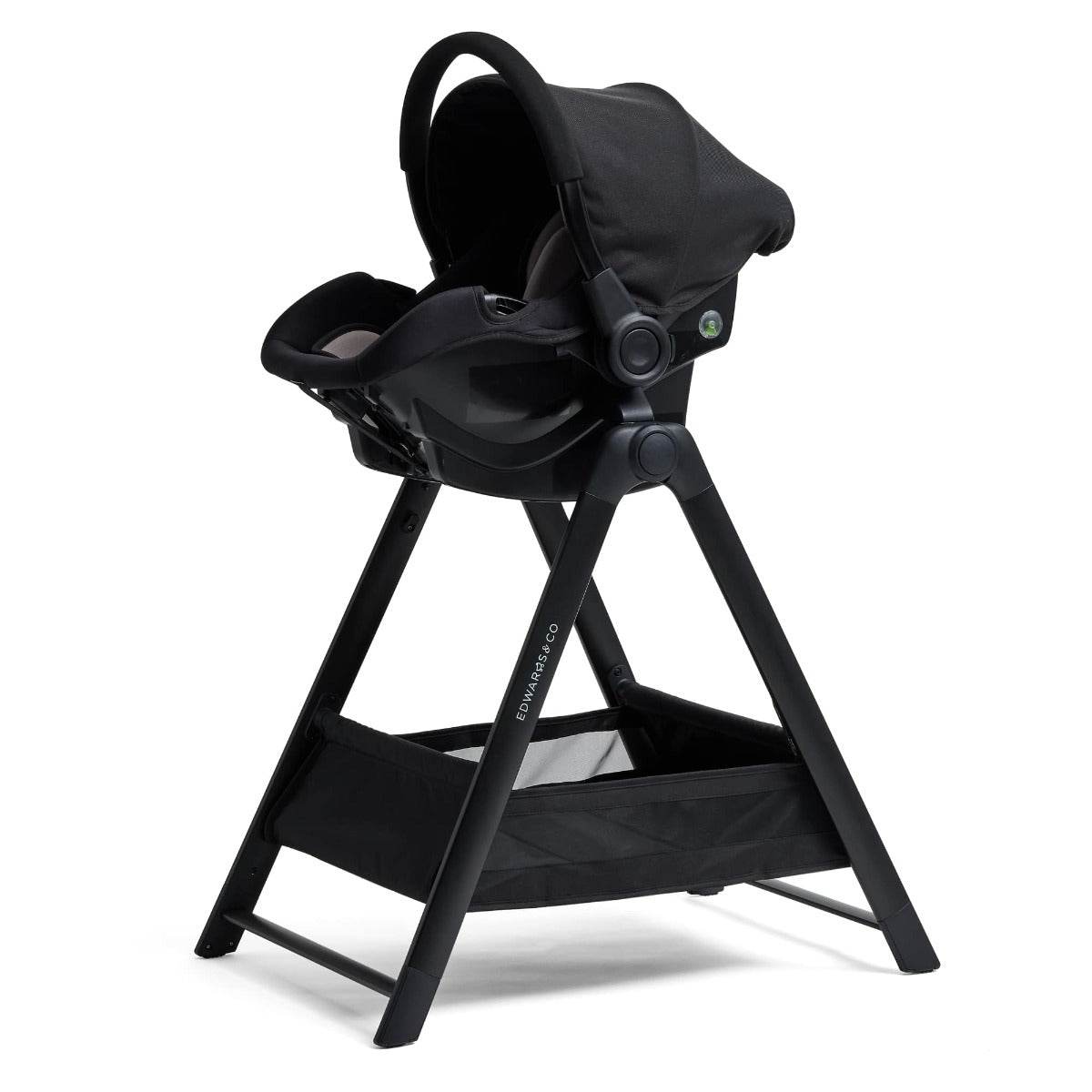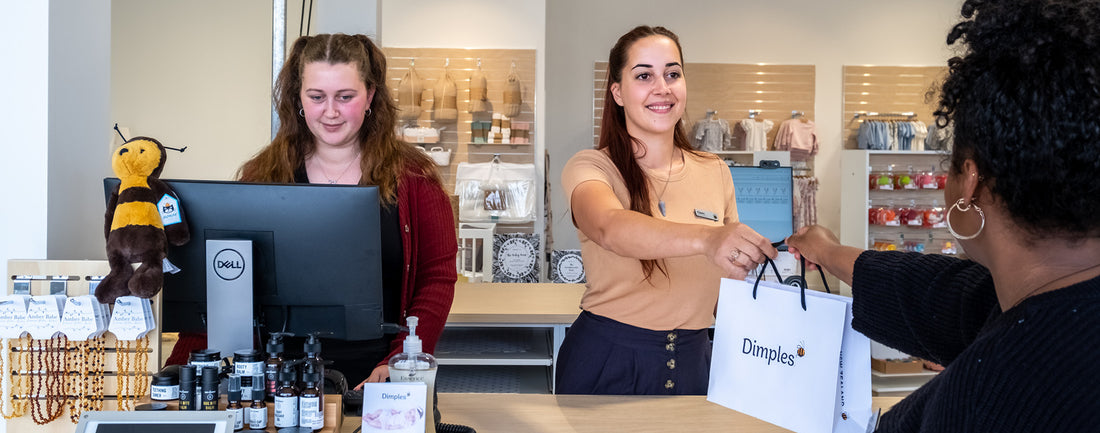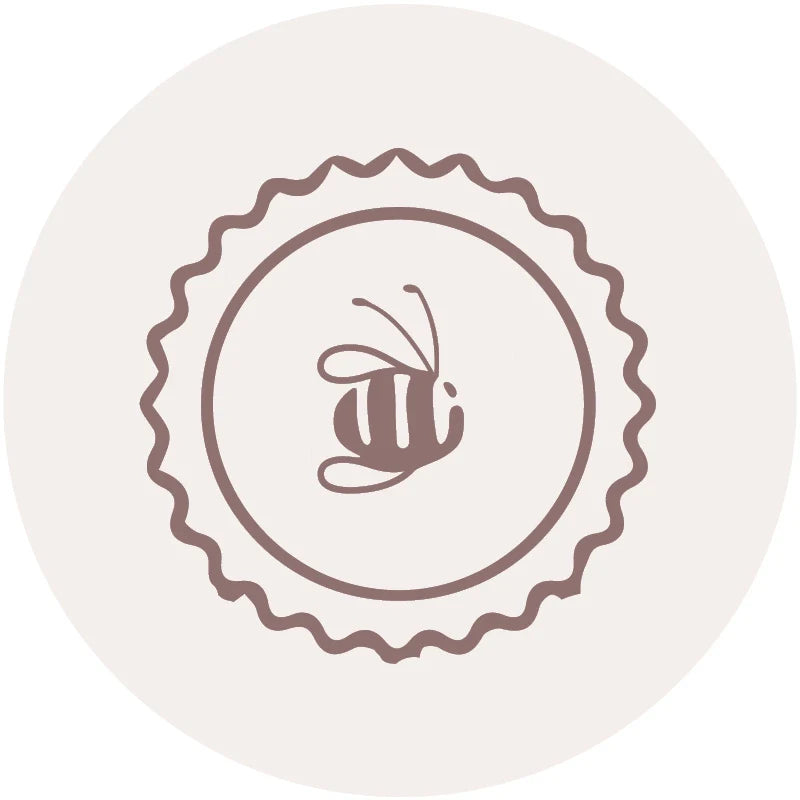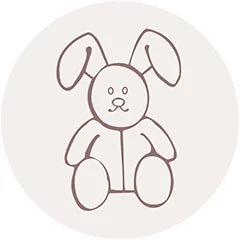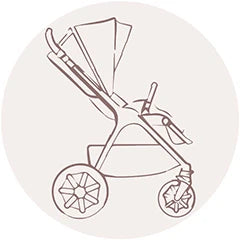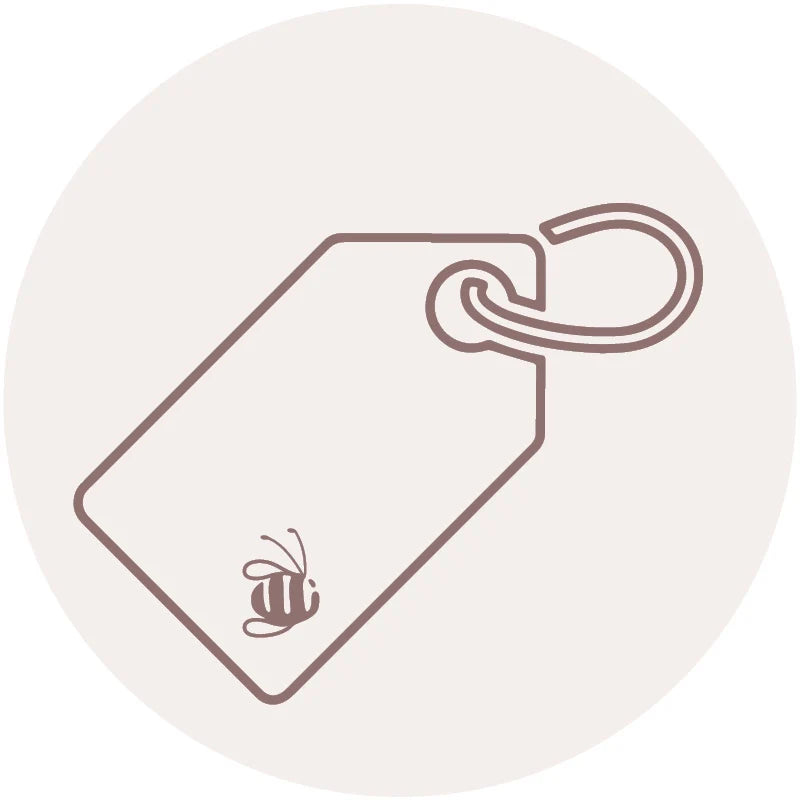Edwards & Co Home Stand
Edwards & Co Home Stand
SKU:EC225
Low stock
Couldn't load pickup availability
Overview
Overview
Lift your baby to a more comfortable height at home - or away - with the Edwards & Co Home Stand. Click your carry cot into the frame for safe and undisturbed sleep, and let life carry on around your little one.
The Home Stand is incredibly light and boasts a compact fold for easy transport and storage, making it an essential item to pack when travelling with your baby.
When used with the main seat of your Olive or Oscar, the Home Stand is suitable from 0-15kg.
Technical Specification
Technical Specification
User Guide
User Guide
Delivery and Returns
Delivery and Returns
- Delivery: Free within NZ on orders over $100 (excluding bulky items) or $8 standard shipping
- Returns: Accepted within 14 days of receipt with proof of purchase
- Some items are excluded from returns including sale items, hardware, car seats, prams, monitors and personal items - please click here for the full list.
Share this product
Recently Viewed Products
Related Blogs
Travel Light With a Great Portacot
Pack Smart, Travel Light, and Rest Easy Travelling with little ones can feel like preparing for a major expedition – nappies, clothes, snacks, toys... and that’s before you even get to the sleep setup. But one item you’ll be glad you packed? A reliable travel cot. Whether you're visiting grandparents, staying in a hotel, or setting up camp at a bach, a quality portacot provides your baby with a familiar and safe space to sleep or play. At Dimples, we’ve curated a selection of trusted travel sleep solutions to help make your trip smoother – because happy sleep = happier holidays. Nuna Paal Playard + Bassinet The Nuna Paal is a beautifully designed playard that grows with your baby. It starts as a cosy bassinet for newborns (up to 7 kg), then easily converts into a spacious play area for toddlers (up to 13.5 kg). Whether it’s nap time or playtime, the Paal provides a safe, comfy space for your little one. Setting up is a breeze with the one‑hand pop‑open frame, and it folds neatly into a carry bag for easy storage. The breathable mesh sides ensure airflow and visibility, while the organic cotton sheet provides a soft resting surface. The zip‑open side panel lets you interact with your baby while they play. With sturdy aluminum framing, padded edges for safety, and a clip‑lock zip for extra security. Nuna Sena Aire + Insect Net The Nuna Sena Aire is your go‑to for stress‑free travel sleep. Light, compact and quick to set up (with just one hand!), it’s ideal for busy parents on the move. Its clever zigzag frame folds down easily, packing neatly into one bag with the mattress wrapping right around it. With 360° ventilation (mesh sides, floor and mattress) and Nuna’s Advanced Air Design, your baby stays cool and comfortable – perfect for warmer climates. Use the zip‑on bassinet for newborns, then remove it to create a secure playpen for toddlers (up to 15 kg). An organic cotton sheet is included. Pair it with the Sena Insect Net to keep bugs away while keeping airflow unrestricted. The zip opening makes check‑ins quick and easy. Journey 2-in-1 Travel Cot The Journey 2-in-1 Travel Cot is a smart, adaptable sleep solution that grows with your baby. Use it as a bassinet from newborn to 6 months (up to 9 kg), then convert it into a full-size cot for toddlers up to 2 years (15 kg). It features a Safer-Sleep Certified mattress, the first of its kind in a travel cot – breathable, firm, and approved for overnight use. Full mesh sides provide airflow and visibility, while the bamboo-fibre mattress cover offers a soft, cool sleeping surface. Parents will love the built-in storage pockets, quick fold, and included insect net – ideal for travel or outdoor naps. Everything packs into a convenient backpack-style carry bag for easy portability. Sleeping on Holiday: Light and Darkness Getting your little one to nap in an unfamiliar space can be tricky – especially if the room is too bright or stimulating. Here are two travel‑friendly options that help create the ideal sleep environment: Blackout Shade for PortacotsThis clever universal Snooze Shade blocks out up to 94% light and fits snugly over the Nuna Sena (and other portacots), creating a dark, cosy space that helps your baby nap well—even during the day or in shared rooms. Blackout BlindsThe Purflo Total Eclipse Portable Blackout Blinds are made from 100% blackout fabric, and blocks out light completely. With an innovative suction fastening system, it attaches securely to most windows without drilling or adhesives. It’s adjustable to fit different window sizes and folds neatly for easy storage or travel. Perfect for home or on the go - an effective solution to help little ones sleep soundly, wherever they are. Travelling with a baby or toddler doesn’t have to mean disrupted routines and sleepless nights. With the right sleep setup, you can enjoy the adventure—and get the rest you need. At Dimples, we’ve got everything you need to make travel easier—so you can focus on creating special memories together.
Learn moreStroller Buying Guide: How to pick the right ride for Your Family
Why Choosing the Right Stroller Matters: Essential Tips for New Parents When you have a baby or toddler, a good stroller is essential. It lets you get out of the house and navigate the world with ease. Leaving the house with a newborn can be tricky, so a high-quality, easy-to-use stroller is a lifeline for many new parents. Your stroller is also one of the most expensive baby purchases you’ll make, so it’s important to get it right. You don’t want to invest in a stroller that ends up being too heavy, hard to fold, or difficult to steer. Of course, no one stroller suits every parent. Consider your lifestyle. Will you be navigating bush walks and country paths or be more likely to keep to the footpaths and malls? Before you buy, it’s a good idea to take a look at different models in-store, push them around, fold them down, and open them up to get a feel for how they work. Before you’re overwhelmed by options and terminology - In New Zealand, we tend to use the words pram, stroller, buggy and pushchair interchangeably. Capsule compatibility For new babies, you’ll most likely want a stroller that’s compatible with your capsule car seat. These are particularly handy during the sleepy newborn phase, as they let you move the baby from car to stroller without waking them. Our strollers are compatible with most capsules from well-known brands, such as Maxi Cosi and Nuna. Talk to our in-store team if you want to check on compatibility. Carrycot – or not A detachable carrycot can be incredibly handy in the early stages – from newborn to around 6 months. Lying flat on their back is the best, safest position for newborn baby to be in. If the seat on the stroller you choose has a lie-flat position, a carrycot isn’t essential. But many parents choose them because they simplify life in the first few months. A carrycot attached to your stroller not only allows your baby to sleep comfortably while on the go, it can also be removed and used as a portable bed for a bit of supervised sleep when visiting friends and family. Single vs. Double Strollers: Which is Right for Your Family? When you buy a stroller for your first baby, it can be hard to imagine life with more children. But it’s a good idea to consider your future when making your decision. Some strollers – like the Nuna Demi Next and the Edwards and Co Olive – have the option to add an extra seat for a sibling. If you plan to have two children close in age, this is worth considering. Having twins? Both the Demi next and Olive are tandem strollers, where the seats are not side-by-side but instead tiered. This is more convenient for everyday errands and shopping, as they’re narrower and easier to manage. Another option to consider for an older sibling is a Stroller board that attaches to the back of the stroller. These are great for independent walkers who might tire on a long walk or need a ride to quicken the pace. The right size for your space Strollers come in a range of shapes and sizes. They’re all foldable, but some – like the lightweight Stokke Yoyo – have a more compact fold than others. It even fits in an aeroplane’s overhead locker making it ideal for travel. Travel can be considered a separate stroller category all together – we’ll do a separate blog on those soon. But even for your everyday stroller, you’ll want to think about storage and transport options. Where will you keep your stroller when you’re at home? How big is the boot of your car? How often will you need to lift it into the car, onto public transport or up stairs? If you can, try the stroller in your boot to see how well it fits. If not, measure the space before you make a decision. How easily the stroller folds is another factor to consider and this is where trying a few models in-store is a good idea. One-hand fold mechanisms are incredibly convenient, especially when your arms are full with a little one. If you think you’ll be lifting your stroller frequently, opt for a lightweight model. Which wheels are best? For a while there, three-wheel strollers seemed to be the only option. Now, four-wheel models are having a resurgence in popularity. Three-wheel strollers are typically thought to be easier to steer, especially with one hand – which can be useful if you’re carrying an upset baby and pushing a pram at the same time. Four-wheel strollers, tend to be more compact, making them easier to manage in shops and cafés. They also tend to fold more neatly for easy storage. Tyre type is another factor to consider - larger wheels with foam-filled or inflatable tyres tend to offer better suspension, which is more comfortable for your baby on rough terrain. Whereas smaller swivelling wheels are easier to manoeuvre around busy places and crowded shops For the best of both worlds, the four-wheeled Mixx has tough, foam filled tyres and boasts easy one-handed steering. The wheels on the New Nuna Swiv offer something unique – with a 360 degree swivel so you can navigate small spaces with side-to-side ease. Forward or back? Forward-facing or rear-facing? If you’ve never bought a stroller before, it can be hard to know what you’ll prefer. Fortunately, this choice is more about preference than safety or practicality. Newborns are naturally drawn to their parent's faces, and a rear-facing stroller lets you interact and keep an eye on them as you go. Then as they grow up, forward-facing gives them a chance to look out on the world around them. Most everyday strollers we sell have convertible parent-facing/world-facing seats so you have both options in one. Other things to consider Comfort features for your little one - like padded seats, adjustable recline positions and good suspension. How comfortable is the handle height? Adjustable handle height can be good for parents of different heights. Does the stroller offer good storage underneath for your baby essentials, nappy bag, and shopping? Fun and functional extras These days, strollers have a huge range of add-ons and accessories – rain and shade covers, parasols, cup holders, snack trays and compatible nappy bags. Choose what’s best for you As with any big purchase, buying a stroller is about working out what’s most important to you, and finding a model that best fits your needs and budget. If you need help finding the right stroller for your family, you can take our Quiz You can also visit one of our stores, talk to the in-store team and take some of our display models for a spin. Check out our range here.
Learn moreWhat’s the Best Baby Monitor in 2025?
Baby monitors are a must-have for parents. They’re an invaluable tool for keeping an eye on your baby and ensuring they are safe and comfortable at all times. As technology evolves, baby monitors now come equipped with a variety of advanced features. So, what is the best baby monitor on the market today? Discover some of the standout models available in 2025, along with their key features and benefits. Do I Need a Baby Monitor? Baby monitors are highly recommended for parents who want to stay connected to their baby while juggling everyday tasks like cleaning, cooking, or working from home. They are particularly useful in larger homes, where hearing your baby from another room might be challenging, or for parents who want extra peace of mind during overnight sleep. How to Choose the Best Baby Monitor The right baby monitor can ease your mind and simplify your routine – but finding the best one comes down to a few key features: Simple setup and use A good monitor should be easy to install and intuitive to navigate, whether it uses buttons, a touchscreen, or connects to your phone. Smartphone-compatible models should pair quickly and reliably. Reliable connection Whether it runs on a local network or Wi-Fi, a baby monitor should stay connected without dropouts – even in larger or multi-storey homes. Strong battery life Look for a model that lasts at least 10–12 hours on a single charge, so you’re not constantly reaching for the charger. Clear video and audio You want to see and hear your baby clearly. Crisp audio, a good camera, and night vision all help give you peace of mind. Built to last Baby monitors should be sturdy enough to handle the occasional bump or tumble – without feeling flimsy or fragile. Best Overall Baby Monitor: Oricom 5" Smart HD Touchscreen Premium Baby Monitor For a comprehensive baby monitor with robust smart technology built-in, the Oricom 5” Smart HD Touchscreen Premium Baby Monitor is your best option. This model is well-loved for many reasons, starting with a Stargrip that allows you to position the camera wherever you like. The camera itself has a 300-metre range within line of sight and infrared night vision capabilities. What makes this the best baby monitor is its in-depth smart features, from Wi-Fi and FHSS Digital Wireless Connectivity to integration with the Hubble Club for Partners app. The app includes motion, sound, and temperature alerts, the option to create personal audio recordings, and more. You can also buy a version of this model with a cot stand for an overhead view. Oricom HD Dual Vision Camera The Oricom HD Dual Vision Camera is a smart, reliable baby monitor that offers more than just peace of mind. With two built-in lenses—standard and wide-angle—you can view more of your nursery at once. Using the free HubbleClub for Partners app (available on iOS and Android), you can stream both camera angles simultaneously to your smart device. This high-definition monitor delivers crisp 1080p video with infrared night vision, so you’ll always have a clear view. It also features motion tracking, automatic camera movement, and a temperature sensor to help you keep baby’s space just right. Built-in lullabies, nature sounds, audiobooks, and two-way talk let you soothe baby from afar—ideal for naps and nighttime routines. Smart home compatible (with Google Assistant and Alexa), sleep-tracking enabled, and designed with a secure connection and wall mount included, the Oricom Dual Vision blends innovation and comfort in one beautifully practical device. Best Breathing Monitor: Oricom Babysense 7 Breathing Movement Monitor Our last option is a different type of monitor often used alongside video or audio monitors. The Babysense 7 , the latest in Oricom’s line of breathing movement monitors, features the same reliable technology in an updated, improved design, offering parents greater peace of mind. With simple one-button activation, it’s easy to use and suitable for newborns from birth. The monitor operates through sensor pads placed under your baby’s mattress, which alert you if their breathing slows below ten breaths per minute. This monitor is part of the Australian Register of Therapeutic Goods (ARTG No. 97479), making it one of the most trustworthy monitors available. It is also battery-powered, meaning you won’t have to deal with any active power sources around your baby. Find the Best Baby Monitor for Your Little One Baby monitors can bring you peace of mind and relieve your anxiety when needed the most. Dimples has the best baby monitors available to cover your diverse needs as a parent. With streamlined options and the most modern smart technology available, we have something for everyone. Visit our baby shop in Auckland or Christchurch to browse our range of baby monitors and see which would suit your home and lifestyle the most.
Learn moreIntroducing Our Virtual Shopping Service
As a busy parent it can be hard to find the time to get out to the shops. Or perhaps you’re in hospital post-birth and realise you need some more essentials in tiny sizes. Of course there’s always the option to shop online, but sometimes that just doesn’t cut it. Perhaps you want to see a product in action, or ask a question, or get advice . . . You can now book in to have a video call with our in-store team. They can show you close ups, give you a demo or help you choose when you’re confused by all the options. It’s the perfect option for busy parents. And we’ve made it easy with an ONLINE BOOKING SYSTEM . Book a Virtual Shopping Appointment Here's why our virtual shopping service is a game-changer: Personalized Assistance: Need help finding the right stroller, cot, or baby monitor for you? Our team of knowledgeable experts can help. Virtual Tours: Explore our store virtually with guided tours led by our experienced staff. From nursery furniture setups to the latest babywear arrivals, our virtual tours give you an immersive shopping experience without leaving your home (or birthing unit). Shop with confidence: Once you've made your selections, you’ll have the peace of mind to buy online. Then you can have your purchase delivered to your door or arrange a Click & Collect. Whether you're a first-time parent or a seasoned pro, we're here to make your parenthood journey a little bit easier. Embrace the convenience of our virtual shopping service and enjoy a stress-free shopping experience like never before.
Learn more

